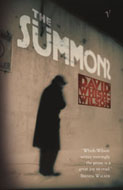For the copper at the bookshop
I was standing at the true crime section of my local bookshop yesterday and got talking to an off-duty copper. Like all WA coppers, he was very familiar with the Shirley Finn ‘story’. We went and had a coffee. Turns out he didn’t know anything new, but he was pretty forthright in saying that the hit was done by WA detectives, or at the very least they’d helped cover it up. He named all the familiar names, and the familiar reasons why. ‘Bad times, they were’ he reckoned. ‘Bad times and bad bad bastards.’
Bad bad bastards could almost be the title of my book, I’ve heard it so many times. Sometimes it’s tinged with respect, or at least disbelief, incredulity at the power those blokes wielded back then, but most often it’s said with an open loathing, especially by other police. Especially because all of the bad bad bastards in WA got away with it – and are all living well.
This copper suggested I try and write about the ‘story behind the story’. I’ve been putting off doing this because I’ve been too busy since the book came out, but here’s a start.
It was an odd story for me to write, in terms of research. There was a fair amount of time spent in the archives at Battye Library and other places, but most of the research was done face-to-face, in interviews with connected people.
I don’t know how many other crime novelists there are who have based their fiction so closely on a ‘truth’, but that was important in my case, out of respect for the Finn family.
First and foremost this was because I got the idea for Line of Sight when I was working teaching creative writing at Casuarina Prison, which is WA’s maximum security prison (Fremantle Prison having closed down in the early 90’s.) I taught a class there one afternoon a week for three years, and occasionally at Canning Vale Prison. I worked mostly in one of the classrooms at the Ed Centre, but also saw prisoners one-on-one in the SHU, or Special Handling Unit, for segregated or difficult prisoners.
Shane Finn was a lifer who I met in my first weeks of teaching. Shane was in for the murder of a man he’d killed in a knife-fight. As I found out later (I never asked blokes what they’d done), the man he’d killed had taunted him about his mother, at a drunken party. We have a mutual friend, who told me that not only did Shane have one arm in a sling at the time, but that both blokes were armed – the implication that if Shane wasn’t the son of Shirley Finn, that he might have been charged with manslaughter instead of murder, might even have got off on the murder charge.
This is only speculation, and so it’s not something I want to talk much about, but those people I’ve spoken to about it (coppers in particular) don’t necessarily think it ridiculous that a bloke like Shane might be put away for as long as possible, given that he was Shirley’s son, because of the rumours around who her murderers were, and fears of his trying to exact retribution..
Either way, Shane served out his full sixteen year whack. When I met him, he was about 2/3rds of the way through his time. I didn’t know who he was except that he received a lot of respect from the other prisoners. I once saw Alan Bond run across a quadrangle to get a feed of bananas, but a bloke like Shane didn’t need to do that. He was a charismatic and highly intelligent bloke who despite the regulation tatts and obvious hardness was also sensitive and acute. He wrote very interesting poetry, but it was his art that was fascinating, and it’s through his art that he’s made a name for himself. He didn’t speak much but everything he said was considered and interesting.
There was a lot I found out later, about how Shane had been forcibly sedated for a fortnight at the time of his mother’s murder, how he’d had his name changed by the relevant welfare department at the time, against his will. But even then it was clear how central the murder of his mother, and the rumours that she’d been murdered by serving members of the WA detective branch, were to Shane’s art, and therefore his life. His paintings were richly textured, highly detailed and deeply symbolic – the symbols used as veils, to represent what couldn’t be directly represented, lest the authorities fear that he was obsessed by his mother’s murder, and might indicate that he intended to act upon this knowledge upon his release.
Whether it was because of this fear, or the new anti-parole paradigm, as mentioned Shane served out his full term. But it was during this time that Shane passed on to me the full and complete CIB file relating to the case, which had been given to him by a ‘sympathetic copper.’ As I’ve said elsewhere, as a writer he suggested that I try and make something of the material, and the contacts that he provided me with.
The file certainly made interesting reading, and it started me off on a path that led me to some very strange places.




